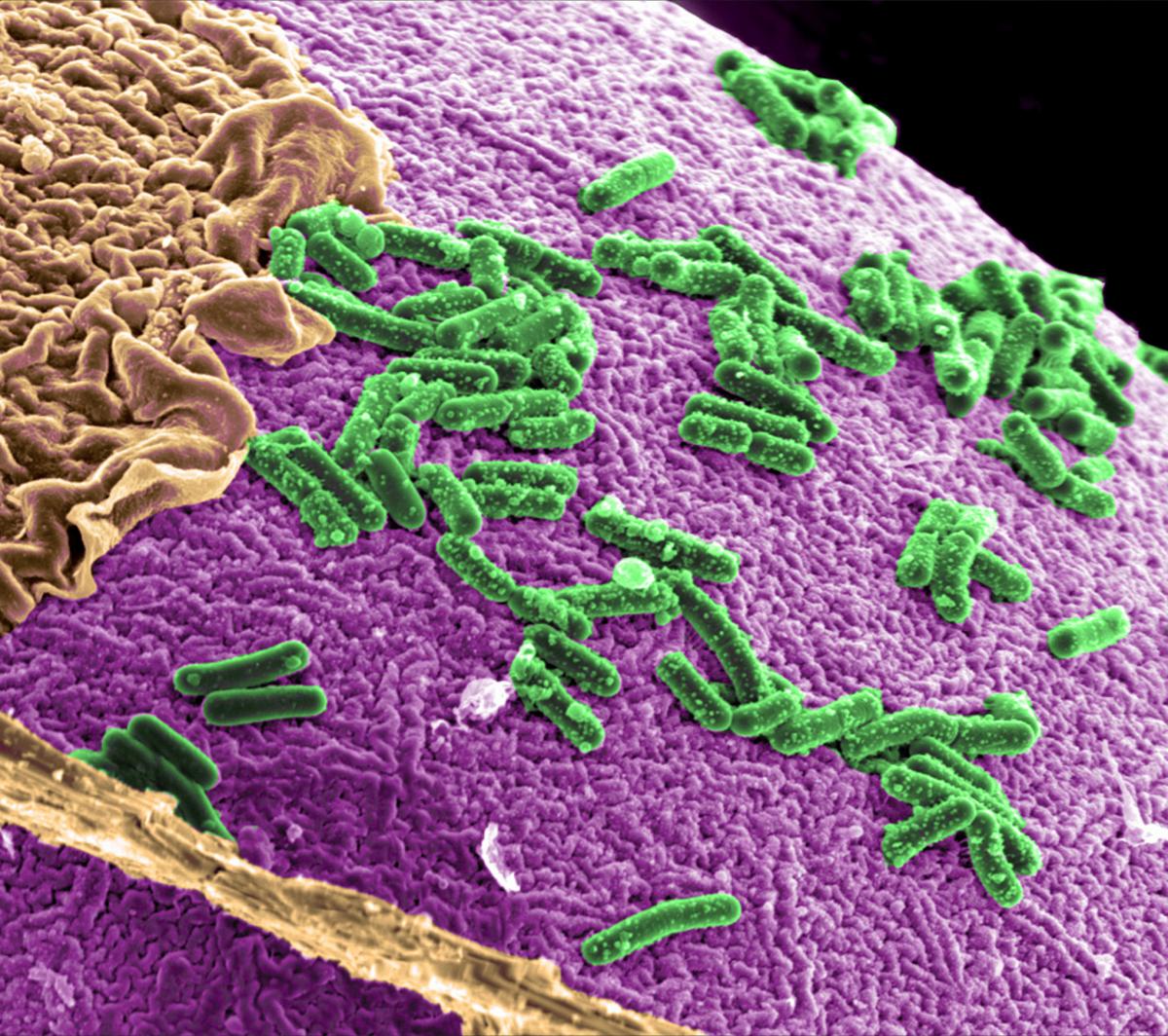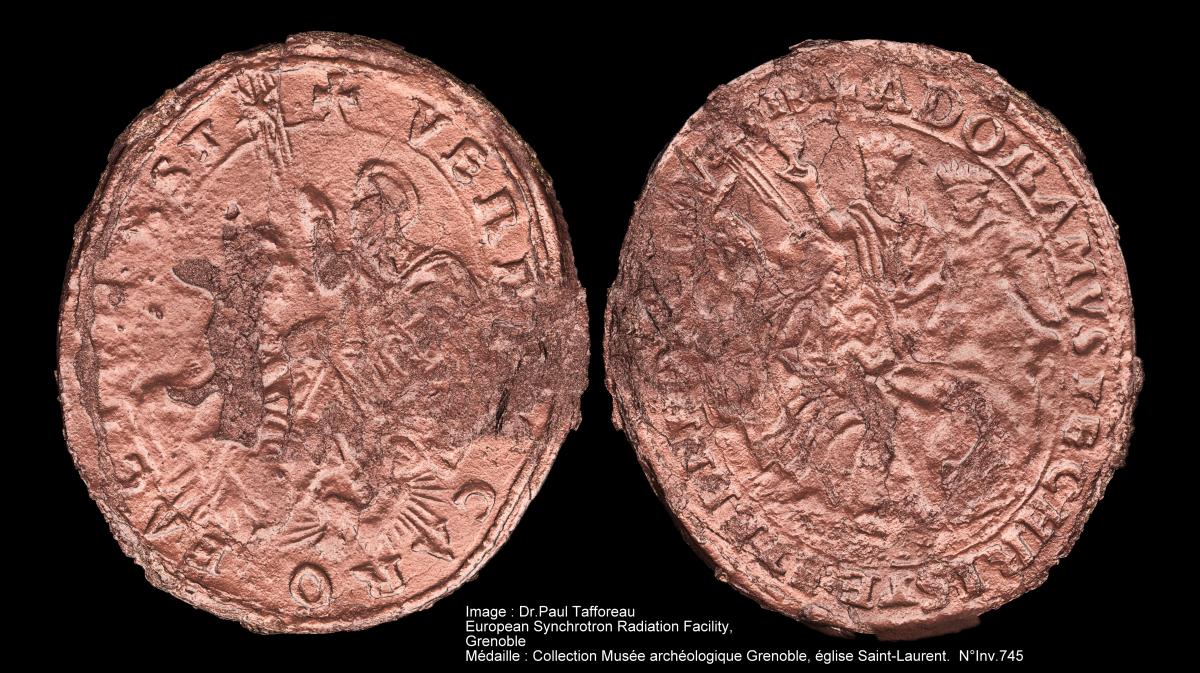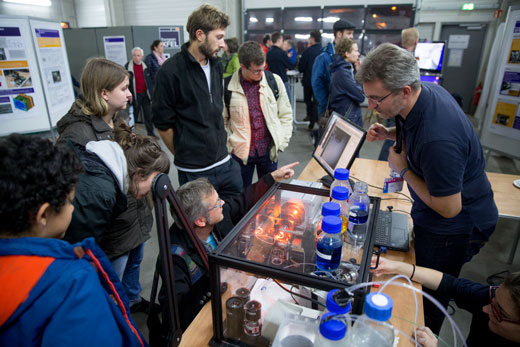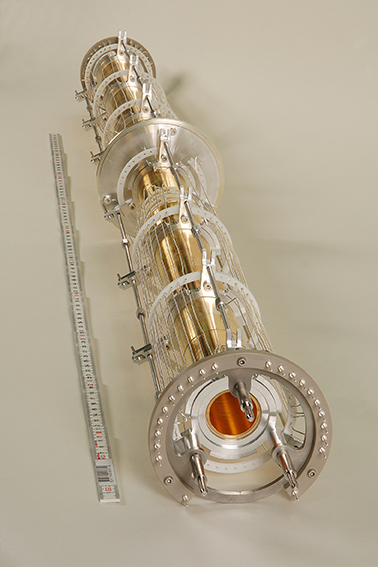Unpicking scientific mysteries across Europe Understand article
Science in School is published by EIROforum, a collaboration between eight of Europe’s largest intergovernmental scientific research organisations (EIROs). This article reviews some of the latest news from the EIROs.
CERN
Boosting collision in restarted accelerator
Image courtesy of CERN
After the successful restart and running of the Large Hadron Collider (LHC) with proton–proton collisions at 13 TeV in mid-2015, CERN collided lead nuclei at a new record energy of 5 TeV per nucleon during a one-month period from 17 November 2015. The experiments aimed at understanding and studying the properties of an extremely hot and dense state of matter consisting of fundamental particles, especially quarks and gluons. The collisions recreated – for an extremely short period of time – the conditions prevailing in the very early Universe about 1 millionth of a second after the Big Bang.
Based in Geneva, Switzerland, CERN is the world’s largest particle physics laboratory.
For a list of CERN-related articles in Science in School, see: www.scienceinschool.org/cern
EMBL
Drugging bacteria

affected by metformin than
by the type 2 diabetes it is
prescribed to treat.
Image courtesy of Pacific
Northwest National Laboratory
Metformin, the drug most often used to treat type 2 diabetes, has a greater effect on gut microbes than the disease itself has. The finding, by scientists at the European Molecular Biology Laboratory (EMBL) in Heidelberg and colleagues in the MetaHIT consortium, has implications for studies searching for links between our microbiomes and disease. Published in Nature, the study points to new approaches for understanding how metformin works and for minimising the side effects of a drug that patients take in high doses for many years.
“It’s surprising that this single drug triggers such a noticeable change in our microbes,” says Peer Bork, who led the work at EMBL. “Now think how many drugs are out there, and how many people take several drugs daily: even if only a fraction of drugs have this big an impact, they could still be dramatically shaping people’s gut.”
Forslund K, Hildebrand F, Nielsen T, Falony G, Le Chatelier E et al. (2015) Disentangling type 2 diabetes and metformin treatment signatures in the human gut microbiota. Nature 528: 262–266. doi: 10.1038/nature15766
EMBL is Europe’s leading laboratory for basic research in molecular biology, with its headquarters in Heidelberg, Germany.
For a list of EMBL-related articles in Science in School, see: www.scienceinschool.org/embl
ESA
Exploring shooting stars at school

50 000 years ago when a
meteor struck Earth’s
surface.
Image courtesy of ESA / NASA
Did you enjoy the Leonid meteor shower in November 2015? Explain this exciting phenomenon to your pupils with the European Space Agency (ESA)’s new teaching resource for primary schools!
‘Tell-tale signs of a shooting star’ is a new teachers’ guide for children aged 10 to 12 that includes pupil activities and a teacher’s demonstration. Children can explore what happens when a piece of space rock collides with Earth’s atmosphere. Using an inquiry-based approach, pupils then perform experiments using household materials to discover what happens if a space rock survives its journey all the way to the ground. For those who wish to explore this exciting topic further, a series of additional activities is also available in a separate document.
Download the new activity to try with your class today and share the spectacular craters you create via the ESA Education Facebook page.
ESA is Europe’s gateway to space, with its headquarters in Paris, France.
For a list of ESA-related articles in Science in School, see: www.scienceinschool.org/esa
ESO
Observatories link to create Earth-sized virtual telescope

surrounding the young star
HL Tauri. This is the sharpest
image ever taken by ALMA.
Image courtesy of ALMA (ESO /
NAOJ / NRAO)
The Atacama Large Millimetre / submillimetre Array (ALMA) continues to expand its power and capabilities by linking with other millimetre-wavelength telescopes in Europe and North America in a series of very long baseline interferometry (VLBI) observations.
In VLBI, data from two or more telescopes are combined to form a single, virtual telescope that spans the geographic distance between them. The most recent of these experiments with ALMA and other telescopes formed an Earth-sized telescope with extraordinarily fine resolution.
These experiments are an essential step in including ALMA in the Event Horizon Telescope, a global network of millimetre-wavelength telescopes that will have the power to study the supermassive black hole at the centre of the Milky Way in unprecedented detail.
ESO is the world’s most productive ground-based astronomical observatory, with its headquarters in Garching, near Munich in Germany, and its telescopes in Chile.
For a list of ESO-related articles in Science in School, see: www.scienceinschool.org/eso
ESRF
X-ray vision deciphers archaeological mystery
The mysteries of a small 17th century metallic box were pierced thanks to X-ray imaging techniques developed at the European Synchrotron Radiation Facility (ESRF) by Paul Tafforeau. Paul was able to virtually reconstitute, in 3D and with astounding resolution, the inaccessible contents of the very fragile and badly damaged box, found in a grave in the St Laurent church in Grenoble, France. The content (three medals and two pearls) was virtually extracted from the box by 3D segmentation and revealed a multitude of details impossible to see with traditional lighting. These results open new possibilities in the field of archaeological research.
For the full story, read the ESRF news article.
Situated in Grenoble, France, ESRF operates the most powerful synchrotron radiation source in Europe.
For a list of ESRF-related articles in Science in School, see: www.scienceinschool.org/esrf

Image courtesy of P Tafforeau / ESRF
EUROfusion
A fusion recipe with cored apples

Reading about tokamaks, a type of fusion reactor, could make you hungry. While the usual tokamaks are shaped like doughnuts, there are some others shaped like cored apples. These cored-apple-shaped tokamaks are known as spherical tokamaks. One such spherical tokamak, MAST (short for Mega Amp Spherical Tokamak), housed at the Culham Centre for Fusion Energy, UK, is getting an upgrade to start experiments in 2017.
Why is it important to conduct experiments on different kinds of tokamaks? Each kind of tokamak gives clues to different questions raised in fusion research, and putting all these clues together will pave the way for the first fusion plant.
For example, due to its spherical shape, MAST will allow the hot plasma, where fusion reactions occur, to be confined into a compressed shape, and it can generate highly pressurised plasma at a relatively low magnetic field. The researchers also want to use MAST to investigate and control turbulence so that they can better understand and control heat loss from plasma. Simply put, the architecture of spherical tokamaks creates some of the conditions that will be experienced in ITER, the next-generation fusion experiment which is currently being built in France. So, here’s waiting for the cored apple to start cooking.
To learn more, read the story Smart Apples for Fusion Research in EUROfusion’s newsletter, Fusion in Europe.
EUROfusion comprises 29 European member states as well as Switzerland and manages fusion research activities on behalf of Euratom. The aim is to realise fusion electricity by 2050.
For a list of EUROfusion articles in Science in School, see www.scienceinschool.org/EUROfusion
European XFEL
Engaging the public on X-ray free-electron laser science

at the Hamburg Night of
Science.
Image courtesy of European
XFEL
While the European X-ray Free Electron Laser (European XFEL) is very busy with construction and technical preparations, its employees have been engaged in several outreach and education activities. In late September 2015, for example, European XFEL scientists led an intensive graduate-level lecture course on X-ray free-electron science in materials research to students from the Technical University of Freiberg in Germany.
In early November, European XFEL opened its doors to the public on a Saturday, offering interactive activities to demonstrate the facility’s research aims and technology, as well as showcasing its construction progress. The event was part of the Hamburg Night of Science and an open day on the campus of the German research centre DESY. Over the course of the day, 18 000 people came to the campus.
Finally, in early December, as a follow-up to the 2014 German–Turkish Year of Research, Education and Innovation, European XFEL participated in an outreach event with the Turkish community in Hamburg, which demonstrated the facility’s science goals. As the facility comes closer to opening for users in 2017, it’s not only the scientific community that is becoming more and more interested and excited about the new research perspectives and possibilities at what will be the world’s brightest light source.
European XFEL is a research facility currently under construction in the Hamburg area in Germany. Its extremely intense X-ray flashes will be used by researchers from all over the world.
For a list of European XFEL-related articles in Science in School, see: www.scienceinschool.org/xfel
ILL
Paving the way to the neutrino mass

precision mass spectrometer
used in the research.
Copyright GSI
Neutrinos are everywhere. Over one hundred trillion neutrinos pass through your body every second, but one of their fundamental properties, their mass, is still unknown. Although the standard model of particle physics predicts neutrinos to be massless, observations prove that neutrinos must have a tiny mass. To find out, scientists study radioactive decays that emit neutrinos and measure the decay energy, which corresponds to the mass difference between the mother and daughter nuclei. One such decay involves an artificial isotope of holmium, with mass number 163, which produces the stable 163Dy. Samples of 163Ho are prepared from natural erbium enriched in 162Er by intense neutron irradiation in the high-flux research reactor at the Institut Laue-Langevin (ILL) in Grenoble, France.
After sample purification and processing at Paul Scherrer Institute Villigen, Switzerland, and Johannes Gutenberg University in Mainz, Germany, the atomic mass difference between 163Ho and 163Dy was directly measured using a very sensitive mass spectrometer at the GSI Helmholtzzentrum für Schwerionenforschung in Darmstadt, Germany. Based on the equivalence of mass and energy according to Einstein’s famous equation E = mc2, the mass difference translates into the energy available for the decay. Averaging many measurements gave a final value of 2833 eV with an uncertainty of only a few tens of eV, confirming the recent results and providing a new baseline to further refine the neutrino mass search.
ILL is an international research centre at the leading edge of neutron science and technology.
For a list of ILL-related articles in Science in School, see: www.scienceinschool.org/ill






